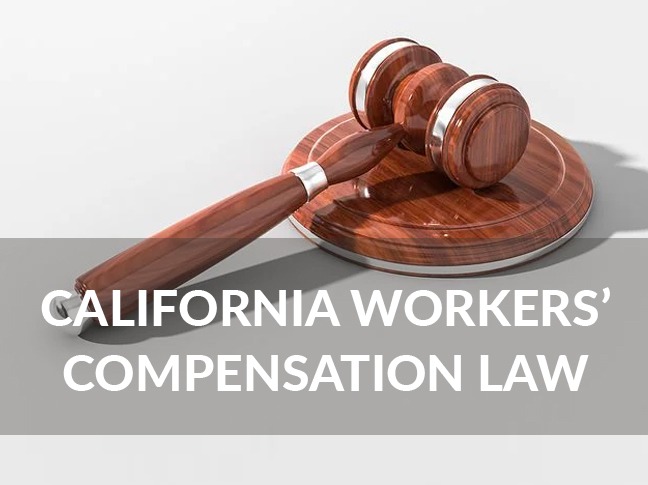California Loophole in the Workers’ Compensation System
A bill that can dramatically transform how business is being done in California is currently in play. Sponsored by California Assembly maker Freddie Rodriguez, this bill takes specific aim at what lawmakers are seeing as a loophole in the workers’ compensation system to shift practical and financial burdens of providing workers’ compensation to staffing companies and away from those responsible for actual jobsite safety.
https://legiscan.com/CA/text/AB2614/2021
“(1) Any information on widespread issues with or instances of client employers, as defined in paragraph (1) of subdivision (a) of Section 2810, and labor contractors, as defined in paragraph (3) of subdivision (a) of Section 2810, being used to shift workers’ compensation responsibility away from those employers who control jobsite risk to employees.
(2) Whether employers with poor workers’ compensation risk are reclassifying their employees as temporary staff or employees of labor contractors in order to shift the employee onto the workers’ compensation coverage of the labor contractor.”
For many years in the 80’s and first part of the 90’s, the mandate of multiple coordinated policies (MCP’s) versus master policy plans was in hot debate in California for those known at the time as “employee leasing firms”, and who are now formally known as Professional Employer Organizations (“PEO”). Workers’ Compensation Insurance Rating Board (“WCIRB”), the rate-making actuarial bureau of California, with keen interest in the sanctity of the experience rating system, proper loss reporting and job-site employer responsibility of worksite conditions in conjunction with CalOsha. While the National Association of Professional Employer Organizations (“NAPEO”), and the now defunct California Association of Professional Employer Organizations (“CAPEO”) valiantly fought and negotiated out the multiple coordinated policy mandate in California known as “rule 4”. Many thought this to be a death knell to the industry, yet it was anything but. In retrospect, it arguably quelled a a large and growing growing swell of negative public opinion about the industry that brought it to the brink of extinction.
Formally, it is known as Section V, Rule 4 of the California Experience Rating Plan – 1995. It is commonly known as shown below as the “Employee Leasing Rule”.
https://tailored-solutions.net/Portals/0/Docs/Compliance/Rule%204%20Califronia%20PEO.pdf
Due to a commonality of services offered to employees by any employer such as payroll, health, workers’ compensation, 401k and other employer/employee related items such as human resources, there is often confusion in California due to the lack of specificity as to what a “labor contractor” is. To me, it is very simple; a PEO enters into a legal agreement with another employer to on some level share non-operational employer-based services. In this model, there are no “split workforces”, “transfer of labor” or placement of employees by the PEO. In fact, by design, there is no change to how the operational employer (aka “client company/employer”) conducts its business whatsoever when it enters into a co-employment relationship. From a regulatory perspective, the experience modification of the client company/employer is used, it is that experience modification CalOsha monitors and to the regulator the only difference is having a PEO involved to help make sure their co-employees properly navigate their way through the workers’ compensation system if injured.
For now, the two committees (insurance, labor and employment) reviewing this bill are both in support of addressing the issue, but in different ways. The insurance committee is looking to commission a report from the Commission on Health Safety and Workers’ Compensation (CHSWC), to be final by 1.1.24, addressing “…related to labor contractors and client employers misrepresenting employee classifications for the purpose of obtaining insurance”. …”Any information on widespread issues or instances of client employers and labor contractors being used to shift workers’ compensation responsibility away from the employers who control job site risk; and … “Whether employers with poor workers’ compensation risk are reclassifying their employees as temporary staff or employees of labor contractors in order to shift the employee onto the workers’ compensation coverage of the labor contractor.
The Assembly Committee on Labor and Employment is taking a more immediate posture for change. Succinctly, “requires a client employer that is subject to Industrial Wage Commission (IWC) Orders #1 and 7 to procure independently of any labor contractor, a valid workers’ compensation insurance policy for any contracted workers providing labor within its normal course of business”.
Rule 4 meets staffing.
I know NAPEO is all over this and making sure people understand the regulations that already apply to PEO and the fact that co-employment is alive, well and properly functioning as mandated some 17 years ago. The three words in rule 4 that have caused this perceived loophole, “except temporary staffing”, will continue to be explored. I have not seen much about this subject yet, but expect it to heat up at this meeting tomorrow. I will report back what I find out.
Join the Conversation on Linkedin | About PEO Compass
The PEO Compass is a friendly convergence of professionals and friends in the PEO industry sharing insights, ideas and intelligence to make us all better. All writers specialize in Professional Employer Organization (PEO) business services such as Workers Compensation, Mergers & Acquisitions, Data Management, Employment Practices Liability (EPLI), Cyber Liability Insurance, Health Insurance, Occupational Accident Insurance, Business Insurance, Client Company, Casualty Insurance, Disability Insurance and more.
To contact a PEO expert, please visit Libertate Insurance Services, LLC and RiskMD.

